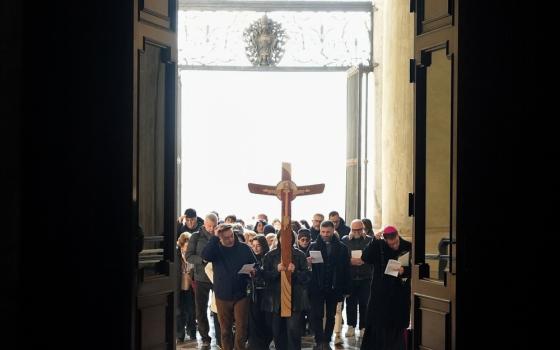Worshippers wearing protective masks receive ashes during Ash Wednesday Mass at the National Shrine of Our Mother of Perpetual Help in Manila, Philippines, Feb. 26, 2020, during the COVID-19 pandemic. The Vatican Congregation for Divine Worship and the Sacraments has issued a note on how priests can distribute ashes on Ash Wednesday while taking precautions to avoid spreading COVID-19. (CNS/Reuters/Eloisa Lopez)
The Vatican Congregation for Divine Worship and the Sacraments asked priests to take special anti-COVID-19 precautions this year when distributing ashes on Ash Wednesday, Feb. 17, including sprinkling ashes on the top of people's heads rather than using them to make a cross on people's foreheads.
The congregation's note on the "distribution of ashes in time of pandemic" was published on the congregation's website Jan. 12 and directs priests to say "the prayer for blessing the ashes" and then sprinkle "the ashes with holy water, without saying anything."
"Then he addresses all those present and only once says the formula as it appears in the Roman Missal, applying it to all in general: 'Repent and believe in the Gospel' or 'Remember that you are dust and to dust you shall return.'"
"The priest then cleanses his hands, puts on a face mask and distributes the ashes to those who come to him or, if appropriate, he goes to those who are standing in their places," it said. "The priest takes the ashes and sprinkles them on the head of each one without saying anything."
The usual practice would be to repeat the formula — "Repent and believe in the Gospel" or "Remember that you are dust and to dust you shall return" — to each person as the ashes are sprinkled on the top of their head or rubbed onto their forehead.
Sprinkling ashes on the top of people's heads, rather than marking foreheads with ashes, is the customary practice at the Vatican and in Italy. Given the spread of the coronavirus, the practice has the advantage of not requiring the priest to touch multiple people.
The Latin, Italian, French, German, Spanish and Portuguese versions of the note also specify that the mask should cover the priests' "nose and mouth."
Advertisement






